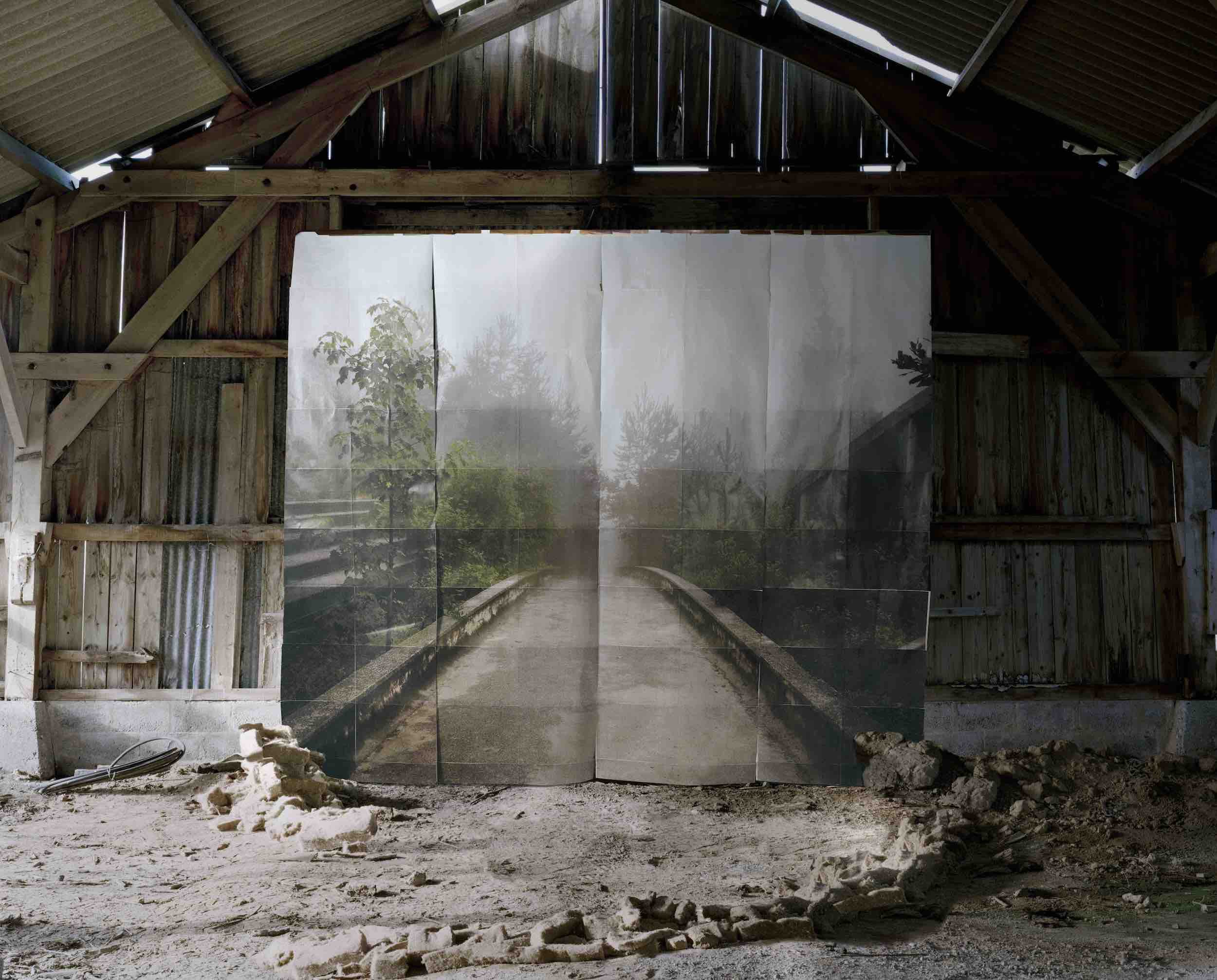09 June 2021 Here is a photographic work entitled Cascade (waterfall). This is a 2009 work by French artist Noémie Goudal. A huge thin cloth set in a dead forest in winter. The clear white cloth hung on two wires that cross the top of the screen pass through a crack in the ground and gather in front of the screen. The reason why the cloth looks shining is probably because it was shot at a time when it was exposed to soft sunlight. In contrast with the piercing of dry trees, the delicate thin cloth is a sufficient material to express the freshness of a real waterfall. The idea is very simple but the effect is stunning.

Noémie Goudal, Jetée, 2010
As you can see in Cascade, Noémie Goudal has been making works created by the method of 'staged photography' since around 2010. Soon after, the production method would develop to use within the photographs themselves. Since around 2012, she has consistently used the technique of creating an image of a fictional space by taking a print of a photograph taken in one place to another place and then capturing it in the photograph.
In the center of Goudal's 2010 work Jetée (pier), you can see the back side of the old pier on the waterside and the water surface. Soon, those who see this work will notice that it is an in-photograph set up in a room in the ruins. However, these two spaces look very naturally continuous, even though they are artificially connected. Careful observation reveals that this continuity is produced by various ingenuity. The wet floor implies that it is adjacent to the waterside, and the camera's viewpoint is carefully chosen so that the vanishing points between the ceiling beams and the pier beams do not deviate significantly. Even the pillar on the right front of the screen looks like a part of the structure of the pier. In addition, the natural light that hits this room from the rear on the left side is inserted from the left side of the pier, and blends with the natural light that hits the water surface and makes the structure on the back side of the bridge stand out. In this carefully crafted image, this abandoned room is filled with waterside humidity, and the closed walls open to the unknown world beyond the pier.
In Search of the First Line (2014) is a series in which the absence of such a story stands out. Here, the image of a fictitious building made up of fragments of old church architecture is brought into a building designed as a factory in the early 20th century. As Goudal was interested in creating different spaces and times using the foreground, middle ground, and background at that time (Note 2), each completely different context of space-time is one through the fragments of the building. It coexists in one photographic work. As if these space-times could come and go. However, the new stories and meanings created by connecting those contexts to each other remain lacking.
Rather, Goudal's work seems to aim to create a place free from any story. One commentator superimposes Goudal's space on Foucault's concept of "heterotopia" (Note 3). Heterotopia is a real space that somehow embodies a non-existent utopia. However, while Foucault imagined living as a space that exists in society, Goudal's space lacks concrete life and human activities to satisfy it. It's forever abstract (Note 4). The charm of the image is that it just wanders the line of sight without looking for an answer in this mysterious space. The person who sees the picture of Goudal Perhaps it's because we want fiction in the sense that it's not here, but we don't really need a story. Or it may reflect the secret desire that the alternatives of this world be infinite. Goudal's work exists there like a vessel that arouses and accepts such desires.
1:Dr. Cliff Lauson, “The View From Here” in Observatories, RVB Books, Paris, 2016.
2:“Fictional Spaces by artist Noémie Goudal” (interview by Betty Wood), THE SPACES, undated. https://thespaces.com/fictional-spaces-artist-noemie-goudal-builds-a-whole-new-world/ (last accessed on 8/5/2021)
3:Emma Lewis and Sebastien Montabonel, “Suspended Disbelief: The Photography of Noémie Goudal”, 2012. http://noemiegoudal.com/text-by-sebastien-montabonel-and-emma-lewis/ (last accessed on 8/5/2021)
4: In this sense, Goudal's image may be more like a mirror that Foucault cites as having both utopian (absent) and heterotopia (existing) elements, rather than the heterotopia itself.

